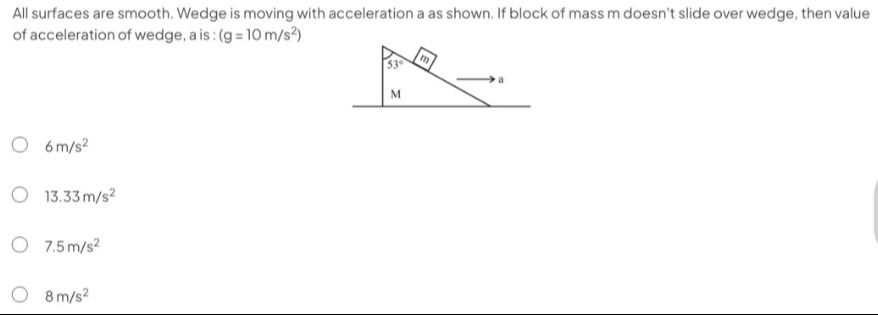Question
Question: All surfaces are smooth. Wedge is moving with acceleration a as shown. If block of mass m doesn't sl...
All surfaces are smooth. Wedge is moving with acceleration a as shown. If block of mass m doesn't slide over wedge, then value of acceleration of wedge, a is : (g = 10 m/s²)

A
6 m/s²
B
13.33 m/s²
C
7.5 m/s²
D
8 m/s²
Answer
13.33 m/s²
Explanation
Solution
For no sliding, the block must have zero acceleration component along the inclined plane. In the non‑inertial frame of the wedge, the block experiences:
- Gravitational acceleration: g downward.
- Fictitious acceleration: a acting opposite to the wedge’s acceleration (to the left).
Step 1. Resolve these accelerations along the plane (angle of incline θ=53∘). The component along the plane is given by:
(−a,−g)⋅(cos53∘,sin53∘)=−acos53∘−gsin53∘=0.Step 2. Solve for a:
acos53∘=gsin53∘⟹a=gtan53∘.Given g=10m/s2 and using tan53∘≈1.333, we get:
a≈10×1.333=13.33m/s2.Thus, the required acceleration of the wedge is 13.33 m/s².
